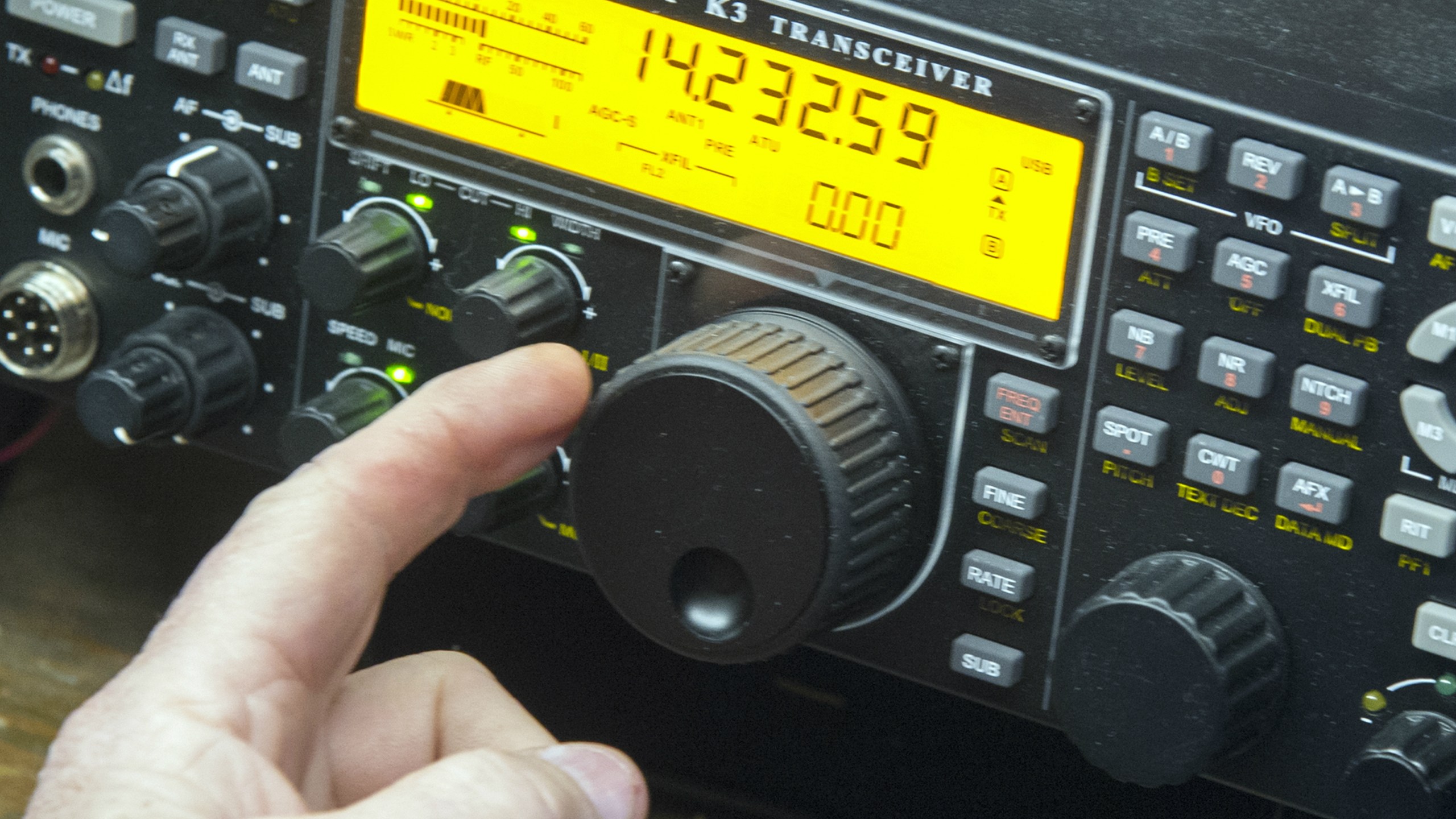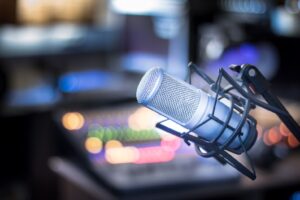Amateur radio, also known as ham radio, is a hobby and a service that has captivated millions of people around the world. It enables individuals to communicate with each other using radio waves, allowing for long-distance and global connections. Amateur radio operators, or hams, play a vital role in emergency communications, experimentation, and community service. In this article, we will explore the latest news and trends in the world of amateur radio, highlighting its significance, technological advancements, and the impact it has on society.
1. The Rise of Amateur Radio Clubs
Amateur radio clubs serve as the backbone of the ham radio community. These clubs bring together enthusiasts who share a common interest in radio communication. Participation in these clubs provides amateurs with a platform to exchange knowledge, collaborate on projects, and foster camaraderie.
One notable example is the Radio Society of Great Britain (RSGB), which was founded in 1913 and is the national membership organization for amateur radio enthusiasts in the United Kingdom. The RSGB organizes various events, offers training and licensing programs, and publishes a monthly magazine, RadCom, which keeps members informed about the latest developments in the amateur radio world.
2. Technological Advancements in Amateur Radio
Amateur radio has come a long way since its early days. Technological advancements have significantly enhanced the capabilities and versatility of ham radio equipment. From simple Morse code telegraphy to voice transmissions and digital modes, amateur radio operators have access to an array of tools and techniques that ensure effective communication.
One notable technological advancement is the introduction of software-defined radios (SDRs), which have revolutionized the way hams operate. SDRs provide a flexible and cost-effective solution by replacing traditional hardware components with software algorithms. This allows for greater modulation options, improved signal filtering, and reduced interference.
Another significant development is the integration of digital modes into amateur radio. Digital modes such as FT8, PSK31, and JT65 have gained popularity due to their efficiency and ability to transmit data even in challenging propagation conditions. These modes enable hams to communicate using text-based messages, images, and even low-bandwidth video.
3. Emergency Communications and Amateur Radio
Amateur radio plays a crucial role in emergency communications during natural disasters, public safety incidents, and other emergencies. When conventional communication systems fail or become overloaded, amateur radio operators step in to provide a reliable means of communication.
In the aftermath of Hurricane Katrina in 2005, for example, amateur radio operators were instrumental in establishing and maintaining communication links. They facilitated the exchange of critical information between affected areas and relief agencies, enabling rescue and recovery efforts.
Amateur radio operators are often involved in emergency preparedness drills and exercises to ensure they are ready to assist when needed. They work closely with local authorities, emergency management agencies, and organizations like the American Radio Relay League (ARRL) to coordinate their efforts and provide essential communication support.
4. Satellites and Space Communications
Amateur radio enthusiasts have also made significant contributions to space communications. Many hams have built and launched their own satellites, known as amateur radio satellites or “ham satellites.” These satellites serve as a platform for experimentation, education, and communication.
An excellent example is the Amateur Radio on the International Space Station (ARISS) program, which allows students around the world to interact with astronauts on board the International Space Station (ISS) using amateur radio equipment. This program inspires young minds and fosters an interest in science, technology, engineering, and mathematics (STEM).
5. Contesting and DXing: The Thrill of Amateur Radio Competitions
Contesting and DXing are two popular activities among amateur radio operators that test their skills and push the boundaries of communication. Contesting involves making as many contacts as possible within a specified time frame, often competing against other operators. DXing, on the other hand, focuses on making long-distance contacts with stations in remote or rare locations.
These activities not only provide a thrilling experience for hams but also contribute to the advancement of amateur radio. Through contesting and DXing, operators test the limits of their equipment, refine their operating techniques, and explore the capabilities of different propagation conditions.
6. The Role of Amateur Radio in Public Service
Amateur radio operators are actively involved in providing public service through their skills and resources. They volunteer their time and expertise to support various community events, public gatherings, and disaster response activities.
One notable example is the annual Boston Marathon, where amateur radio operators play a vital role in ensuring the safety and security of participants and spectators. They provide real-time communication between medical teams, race officials, and law enforcement agencies, enabling swift responses to any emergencies that may arise.
Amateur radio operators also contribute to public service by participating in local community events, such as parades, festivals, and charity walks. They assist with crowd control, traffic management, and coordination between different event organizers and agencies.
7. The Future of Amateur Radio
The future of amateur radio looks promising, with new technologies and opportunities on the horizon. As the world becomes increasingly connected, amateur radio continues to evolve and adapt to stay relevant in the digital age.
One area of growth is the integration of amateur radio with the Internet of Things (IoT). Hams are exploring ways to connect their radios to the internet, enabling remote operation, data exchange, and the development of innovative applications.
The emergence of small, low-power satellites, known as CubeSats, also presents exciting possibilities for amateur radio. These satellites can be deployed by individuals or organizations, providing opportunities for hams to experiment with space communications on a smaller scale.
Conclusion
Amateur radio is not just a hobby; it is a vibrant and dynamic community that embraces innovation, public service, and the spirit of exploration. From emergency communications to technological advancements, amateur radio continues to play a vital role in connecting people and bridging gaps, both locally and globally.
As we look to the future, the integration of new technologies and the expanding opportunities for experimentation and collaboration will ensure that amateur radio remains an integral part of our communication landscape. Whether you are a seasoned ham or someone considering joining this fascinating hobby, the world of amateur radio offers endless possibilities for learning, growth, and making a positive impact.
FAQs (Frequently Asked Questions)
1. How can I become a licensed amateur radio operator?
To become a licensed amateur radio operator, you need to pass an examination administered by the regulatory authority in your country, such as the Federal Communications Commission (FCC) in the United States. The examination tests your knowledge of radio regulations, operating procedures, and technical concepts. There are various resources available, including study guides and practice exams, to help you prepare for the examination.
2. Can I communicate with astronauts on the International Space Station using amateur radio?
Yes, it is possible to communicate with astronauts on the International Space Station using amateur radio equipment. The Amateur Radio on the International Space Station (ARISS) program facilitates these contacts, primarily with schools and educational institutions. However, due to the limited availability of opportunities and the high demand, it may be challenging to secure a direct contact with the astronauts.
3. Are there any age restrictions for getting an amateur radio license?
No, there are no age restrictions for obtaining an amateur radio license. People of all ages, including children, are welcome to pursue amateur radio as a hobby. There are special licensing provisions and operating privileges for young operators, aimed at encouraging their participation and learning.
4. What equipment do I need to get started with amateur radio?
Getting started with amateur radio requires some essential equipment, including a transceiver (radio), an antenna, and necessary accessories like cables, connectors, and power supplies. The specific equipment you need depends on the frequency bands you plan to operate on and the modes you want to explore. It is advisable to start with a basic setup and gradually expand your station as you gain more experience and expertise.
5. How can I find other amateur radio operators to communicate with?
There are several ways to find other amateur radio operators to communicate with. Joining a local amateur radio club is an excellent way to connect with like-minded individuals in your area. Many clubs organize regular nets, where operators gather on a specific frequency and time to chat and exchange information. Online platforms, such as amateur radio forums and social media groups, also provide opportunities to connect with hams from around the world.
Summary
Amateur radio, or ham radio, is a hobby and service that enables individuals to communicate with each other using radio waves. Amateur radio clubs serve as the backbone of the ham radio community, fostering collaboration and knowledge exchange. Technological advancements, such as software-defined radios and digital modes, have enhanced the capabilities of amateur radio equipment.
Amateur radio plays a critical role in emergency communications, providing a reliable means of communication during disasters and other emergencies. Hams also contribute to space communications through the launch of amateur radio satellites and programs like ARISS, which allows students to interact with astronauts on the International Space Station.
Contesting and DXing provide thrilling experiences for amateur radio operators, pushing the boundaries of communication.Amateur radio operators also actively engage in public service, volunteering their skills and resources to support community events and disaster response activities. The future of amateur radio looks promising with the integration of new technologies, such as the Internet of Things (IoT) and the emergence of small satellites known as CubeSats.
To become a licensed amateur radio operator, one must pass an examination administered by the regulatory authority in their country, such as the Federal Communications Commission (FCC) in the United States. There are resources available, including study guides and practice exams, to help individuals prepare for the examination.
Communicating with astronauts on the International Space Station (ISS) using amateur radio equipment is possible through the Amateur Radio on the International Space Station (ARISS) program. This program primarily facilitates contacts with schools and educational institutions, inspiring students and fostering an interest in STEM fields.
There are no age restrictions for obtaining an amateur radio license. People of all ages, including children, are welcome to pursue amateur radio as a hobby. Special licensing provisions and operating privileges are available for young operators to encourage their participation and learning.
Getting started with amateur radio requires essential equipment, including a transceiver (radio), an antenna, and necessary accessories like cables, connectors, and power supplies. The specific equipment needed depends on the frequency bands and modes one plans to operate on. It is advisable to start with a basic setup and gradually expand the station as experience and expertise grow.
Finding other amateur radio operators to communicate with can be done through joining local amateur radio clubs, participating in nets organized by these clubs, or joining online platforms such as forums and social media groups dedicated to amateur radio.
In conclusion, amateur radio is a vibrant and dynamic community that embraces innovation, public service, and the spirit of exploration. From emergency communications to technological advancements, amateur radio continues to play a vital role in connecting people and bridging gaps, both locally and globally. As the world becomes increasingly connected, amateur radio will evolve and adapt to stay relevant in the digital age. Whether you are a seasoned ham or someone considering joining this fascinating hobby, the world of amateur radio offers endless possibilities for learning, growth, and making a positive impact.



